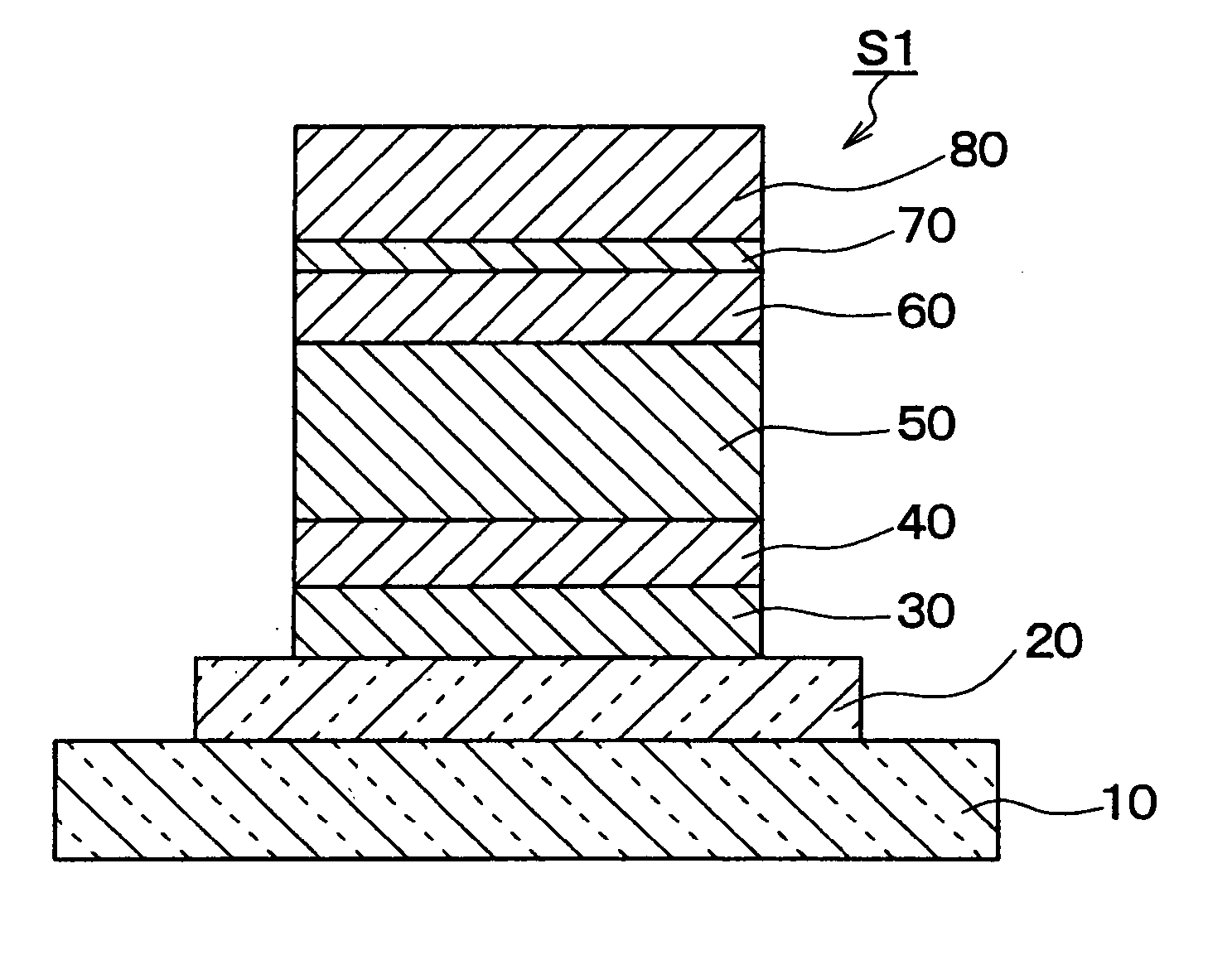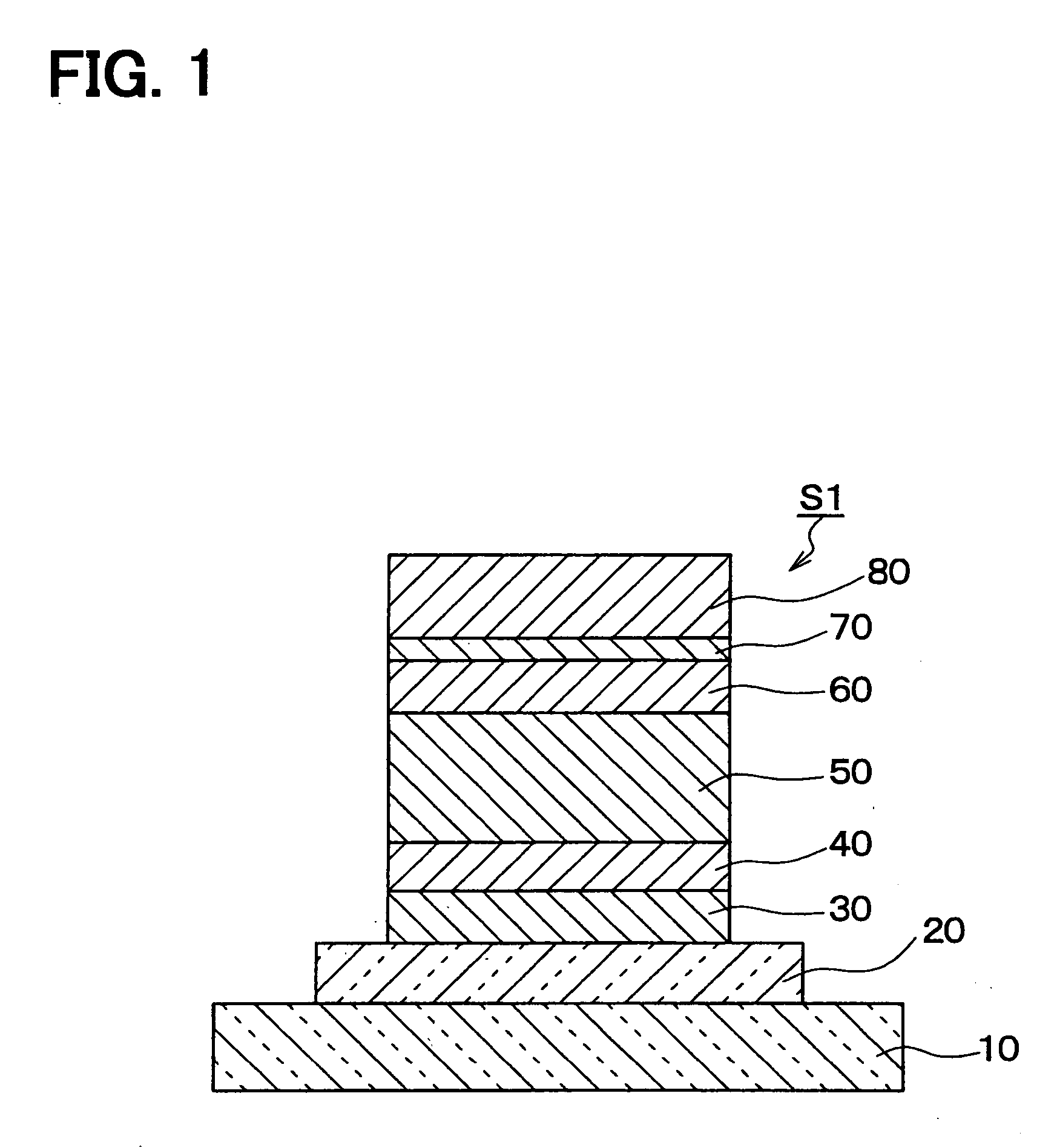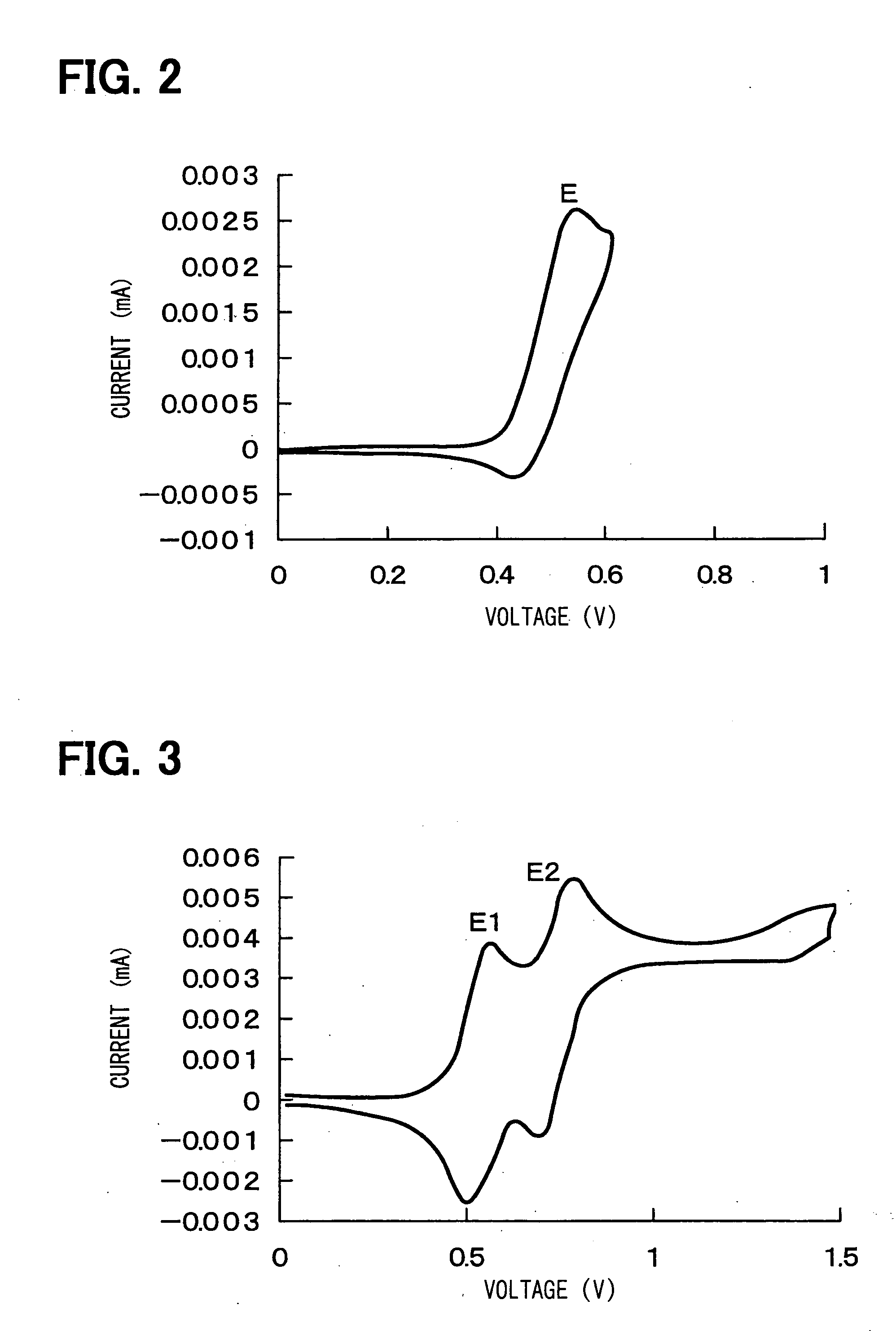Organic electroluminescent device
a technology of electroluminescent devices and organic el, which is applied in the direction of discharge tubes, luminescent screens, instruments, etc., to achieve the effects of improving brightness lifetime, effective energy gap, and improving brightness lifetim
- Summary
- Abstract
- Description
- Claims
- Application Information
AI Technical Summary
Benefits of technology
Problems solved by technology
Method used
Image
Examples
investigation example 1-1
[0100] Over a glass substrate 10, an ITO film (clear electrode) was formed as an anode 20. The surface of the substrate was adjusted to Ra of about 1 nm and Rz of about 10 nm by polishing.
[0101] Over the anode 20, a 10-nm hole injection layer 30 made of CuPc as an organic material having crystallinity was formed. Over the hole injection layer 30, a hole transporting layer 40 of 20 nm thick was formed using Compound 1, a tertiary amine compound.
[0102] Over the hole transporting layer 40, a light emitter layer 50 of 20 nm thick was formed using a 60:20:3 (weight ratio) mixture of Compound 1 as a tertiary amine compound, Compound 6 as an electron transporting material and Compound 8 as a light emitting additive.
[0103] An organic EL device was fabricated by successively forming, over the light emitter layer 50, Compound 6 of 20 nm thick as an electron transporting layer 60, tris(8-quinolinolato)aluminum of 10 nm thick, LiF as an electron injection layer 70, and Al as a cathode 80 and...
investigation example 1-2
[0105] By using a similar device structure under similar device fabricating conditions to Investigation Example 1-1 except for the use of Compound 7 as the electron transporting material used for the light emitter layer 50 and the layer of the electron transporting layer 60 on the side of the light emitter layer 50, a device was fabricated.
[0106] Durability test of the resulting device was carried out under the circumstance of 85° C., initial brightness of 400 cd / m2 and 1 / 64 duty driving. The results are as shown in Table 1. The remarkable appearance of spots was not observed even when the storage test under the circumstance of 100° C. was conducted for 500 hours or greater.
investigation example 2-1
[0107] By using a similar device structure under similar device fabricating conditions to Investigation Example 1-1 except for the use of Compound 2 as the tertiary amine compound used for the hole transporting layer 40 and light emitter layer 50, a device was fabricated.
[0108] Durability test of the resulting device was carried out under the circumstance of 85° C., initial brightness of 400 cd / m2 and 1 / 64 duty driving. The results are as shown in Table 1. The remarkable appearance of dark spots was not observed even when the storage test under the circumstance of 100° C. was conducted for 500 hours or greater.
PUM
| Property | Measurement | Unit |
|---|---|---|
| Glass transition temperature | aaaaa | aaaaa |
| Ionization potential | aaaaa | aaaaa |
| Mass | aaaaa | aaaaa |
Abstract
Description
Claims
Application Information
 Login to View More
Login to View More - R&D
- Intellectual Property
- Life Sciences
- Materials
- Tech Scout
- Unparalleled Data Quality
- Higher Quality Content
- 60% Fewer Hallucinations
Browse by: Latest US Patents, China's latest patents, Technical Efficacy Thesaurus, Application Domain, Technology Topic, Popular Technical Reports.
© 2025 PatSnap. All rights reserved.Legal|Privacy policy|Modern Slavery Act Transparency Statement|Sitemap|About US| Contact US: help@patsnap.com



